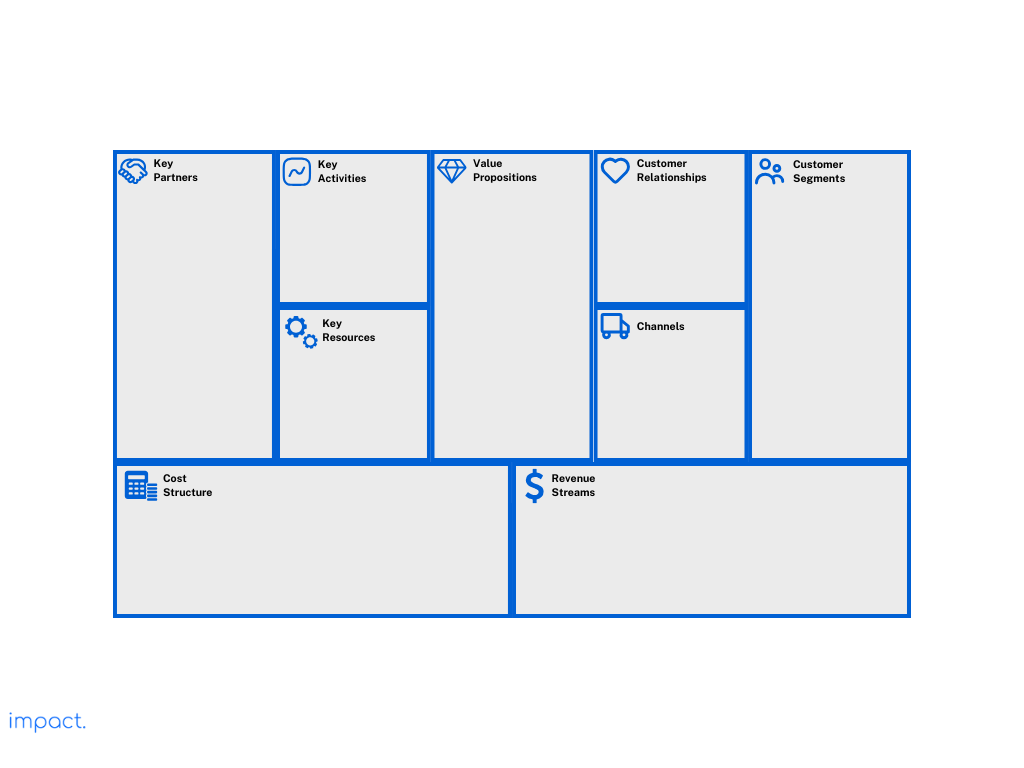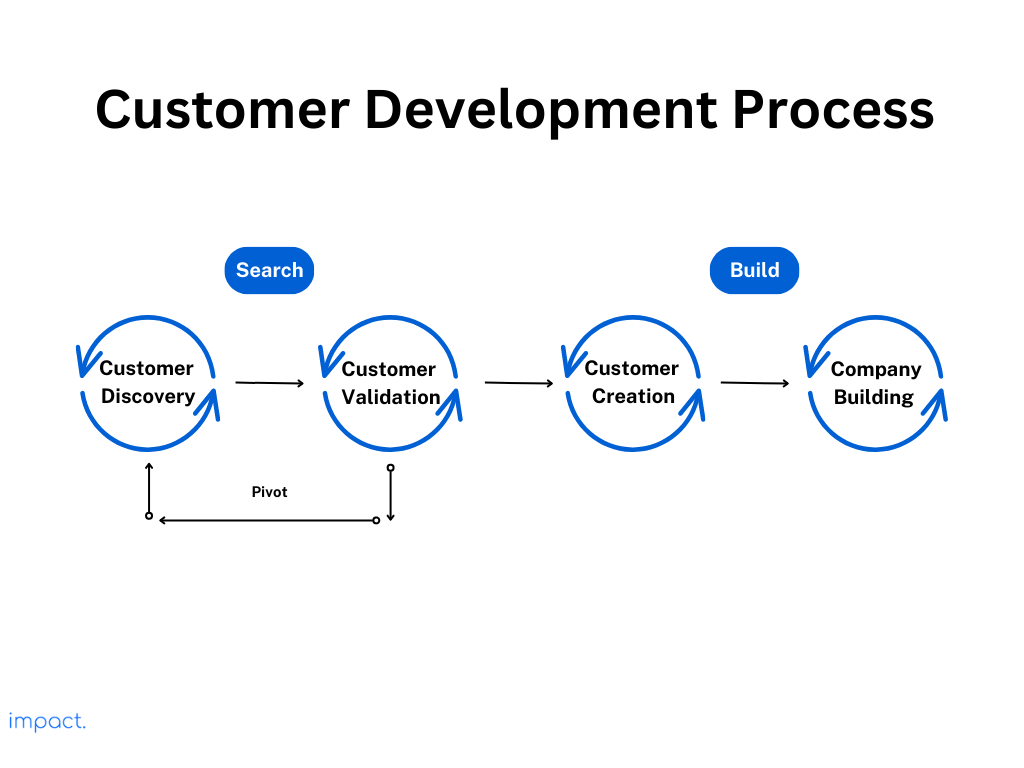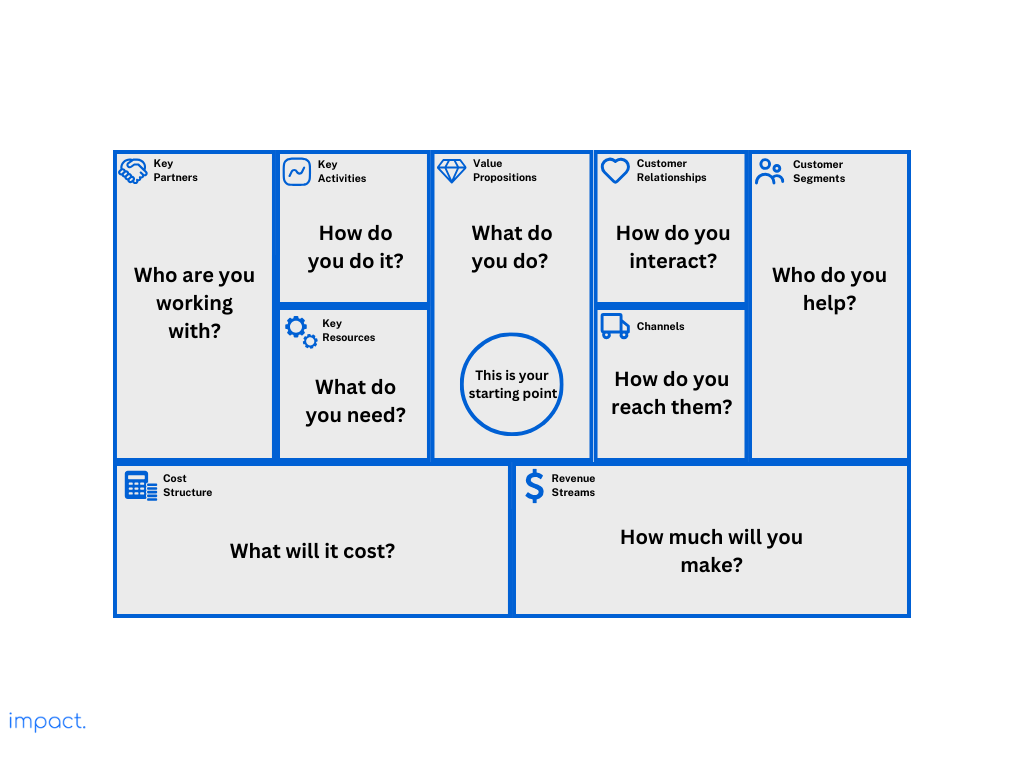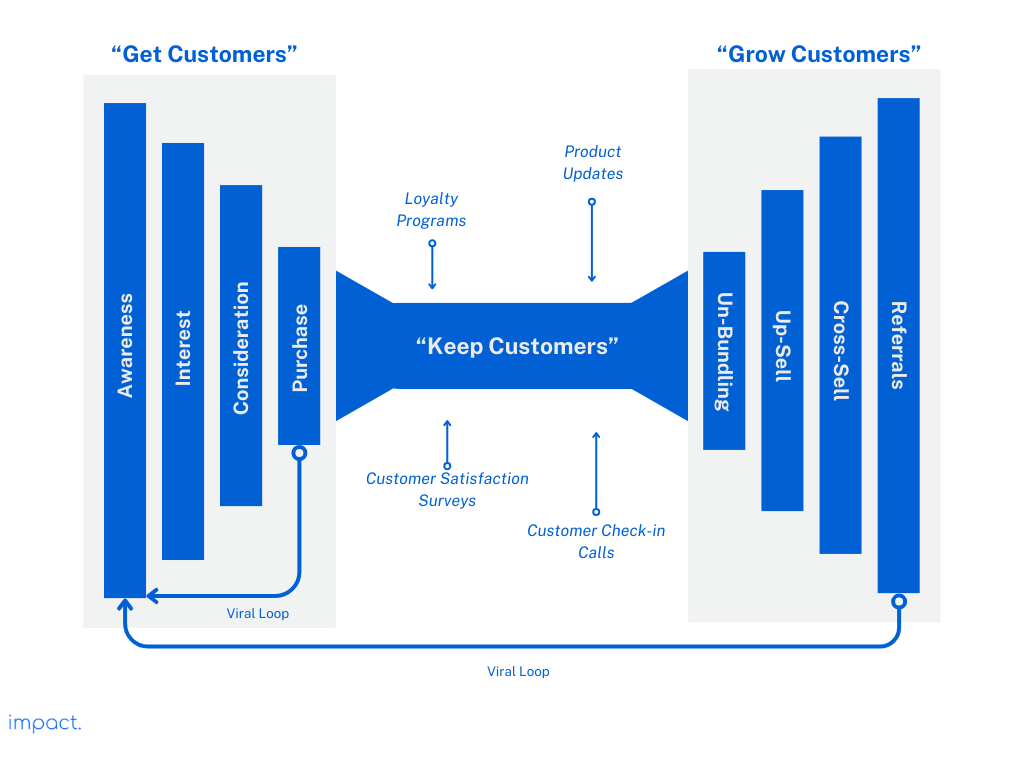Kanban: Definition, 6 Rules, and its Benefits
Kanban is a crucial part of the Just in Time (JIT) system, which we discussed…
Sean Thobias
May 17, 2025The last chapter explored the essential steps of creating a web startup, using steps from “The Startup Owner’s Manual” by Steve Blank and Bob Dorf. Now, let’s dive into a crucial tool pivotal in your startup journey: the Business Model Canvas.
As your startup progresses through the customer development process, you’ll rely on the Business Model Canvas as your trusty scorecard. It’s your guide, helping you track and refine your business hypotheses for each critical component.
In this article, we aim to explain the Business Model Canvas. We’ll break it down into nine key components, giving you a clear understanding of how this canvas can be your compass on the path to startup success.
Read more: Building a Company: 4-Step Customer Development Guide
A business model is like a roadmap that shows how a company creates, delivers, and makes money from its products or services. But sometimes, it’s tough for everyone in a company to understand this roadmap clearly.
That’s where the Business Model Canvas comes in. It’s a handy tool developed by Alexander Osterwalder that helps you figure out how your company will make money. Think of it as a strategic tool for startups. It enables you to plan, adapt, and change your business idea.

Unlike a typical company chart that shows how things work inside, the Business Model Canvas is more like a treasure map. It helps you explore the unknowns that many startups face. There are nine boxes on the canvas, each representing a crucial part of your business idea. (We will explain each component later on in this article).
As your startup goes through the customer development process, the Business Model Canvas becomes your scorecard. You put your ideas about each part of your business model on it.

Then, as you learn more from your customers, you update those ideas. It’s like starting with a map of where you think the treasure is, and then, as you explore, you adjust your course based on what you find.
Read more: Customer Development Process: 4-Step Framework for Startups
By leveraging the Business Model Canvas, you can unlock numerous benefits that pave the way for a more structured, adaptable, and successful startup journey. Here are some benefits that you can gain when using this strategic tool:
The Business Model Canvas is like a blueprint for your business. It breaks down the essential parts of your business into clear blocks. These blocks help you see how everything fits together.
Using the Business Model Canvas, you can organize your business thoughts neatly. It ensures that you don’t miss anything important. Plus, it shows how different parts of your business connect.
Simply put, it’s a tool that helps you create a clear plan for your business. It makes you think deeply about each part, ensuring your strategy is well-defined.
The Business Model Canvas is like a flexible blueprint for your startup. It lets you begin with your ideas, even if they are only assumptions. You can improve your plan as you learn more and get feedback. It’s all about making your business better bit by bit.
This canvas not only simplifies and streamlines but also accelerates the development of your business strategies. Think of it like a rough sketch that you refine over time as your business vision evolves. The canvas encourages a flexible mindset where you plan, check, and make changes as needed.
Imagine the Business Model Canvas as a set of educated guesses. You need to check for these guesses by talking to real customers. Why? Because as your business grows and gets more customers, your plan will need to change. So, the canvas is like a fluid tool that moves and adapts to your business journey.
By mapping your ideas on the canvas early on, you can quickly identify any potential risks and assumptions that may arise. It’s similar to spotting potholes on the road before driving into them.
The Business Model Canvas serves as a helpful guide for taking your idea to the market. It connects your value, target audience, and revenue generation strategy. This information is crucial for developing your marketing, positioning, and sales plans. Additionally, it’s faster and more efficient than creating a lengthy business plan, providing you with a competitive advantage.
The canvas highlights a crucial factor for startup success: knowing what your customers want and what issues they face. This understanding is essential because it guides your decisions and actions.
When you know your customers’ needs and problems, you can effectively tailor your products or services to meet those demands. It increases your chances of success and helps you create a more meaningful and valuable solution for your target audience. So, remember that understanding your customers is a fundamental step toward a successful startup.
Now that we’ve grasped the essence of the Business Model Canvas, let’s delve deeper into its nine critical components in more detail. These components are the building blocks of your business strategy, each playing a unique and essential role in shaping your startup’s success.

The value proposition is the core of your startup. It’s what makes your business stand out and provides solutions to your customers’ problems. It answers the question, “Who are you creating your startup for?” Simply, it’s about solving your customers’ problems and meeting their needs.
Customers aren’t interested in your fancy technology or all your cool features. What matters to them is how you can make their lives easier or better. In this part of the Business Model Canvas, you should define how your product or service benefits your customers. Think of it as a list of how your startup will solve their problems and fulfill their needs. That’s what the value proposition is all about.
Who are your customers, and why do they buy from you? In this part of the Business Model Canvas, you group your customers based on similarities like age, gender, interests, and spending habits.
Identifying these customer groups is crucial. You must understand their needs, behaviors, and unique traits to create customer personas. Startups often have multiple customer segments, each requiring a tailored approach. Always remember that your company’s purpose is to cater to the needs of its customers, not the other way around.
Distribution channels are the paths your product takes to reach your customers. Think of them as the routes to deliver what you’re selling. These channels are part of your marketing plan. Picking the right ones ensures your product gets to the right people.
Today, there are various methods to deliver your product to reach customers. Here are a few: Search Engine Marketing (SEM), Search Engine Optimization (SEO), content marketing, traditional ads, and working with blogs that match your target audience.
Read more: Unlocking Growth: 19 Traction Channels for Business Success
The customer relationships part of the Business Model Canvas is about how you connect with your customers, make them stay, and buy more from you. Imagine it as a two-sided funnel.

The revenue streams component is about how your business earns money by selling your product or service to customers. It’s about figuring out what customers are willing to pay for and how to get them to pay. Knowing your revenue streams is crucial for your business to survive and grow.
It’s also essential to set the right price for your offering. You need to consider how much customers are willing to spend compared to the problem your product or service solves. You can use various pricing models, such as direct sales, subscription, or freemium (giving basic services for free and charging for premium features).
The resources component of the Business Model Canvas deals with what your startup needs to get things done. It’s about the essential assets your business relies on to offer its products or services and run smoothly. These assets could be financial, physical (machines, vehicles), technological (software), intellectual (like patents), and your team.
The key partners component is about whom you need to work with from external companies or suppliers to make your business work. These partners help you do the essential tasks and provide what you need to make your customers happy.
It’s important to consider what your partners will contribute and when they will do it. Your business may require assistance from others, and understanding their role is crucial.
Many startups think they must partner with other companies immediately because big companies do it. However, partnering in your first year differs from when your startup has grown into a mature company. So, think carefully about when and who to partner with.
The key activities in your business or product are your actions to make your customers happy. This part of the Business Model Canvas is all about the essential tasks your startup must do to provide value to customers. It includes everyday jobs and big strategic moves that help your business grow. To make your business work, focus on these actions.
In the Business Model Canvas, all the components come together to form the cost structure. This part represents the money you need to run your business.
Your cost structure includes two main types of expenses:
Understanding your cost structure is crucial for effective financial management and ensuring the profitability of your business. Here are key aspects to consider:
When running your business, it’s crucial to consider the opportunity cost. Consider the potential earnings you might have had if you were doing something else instead. By understanding all these costs, you can make informed financial decisions for your startup.
The Business Model Canvas is an invaluable tool for startups on their journey to success. It provides a clear and concise roadmap, allowing companies to visualize how they create, deliver, and monetize their products or services. Its nine essential components serve as a strategic companion, helping entrepreneurs adapt and refine their business ideas as they navigate the often uncharted waters of the market.
As we conclude our startup guide, remember that the journey doesn’t end here. The Business Model Canvas is not just a one-time map; it’s a dynamic tool that evolves with your startup’s growth. Continuously update your canvas based on the insights gained from your customers, much like adjusting your course while on a treasure hunt.
With dedication, adaptability, and a well-mapped strategy, your startup is poised for success. Embrace the adventure, stay agile, and keep refining your business model to unlock the treasures of entrepreneurship.
Blank, Steve, and Bob Dorf. The Startup Owner’s Manual: The Step-By-Step Guide for Building a Great Company. 2020.
Impact Insight Team
Impact Insights Team is a group of professionals comprising individuals with expertise and experience in various aspects of business. Together, we are committed to providing in-depth insights and valuable understanding on a variety of business-related topics & industry trends to help companies achieve their goals.
75% of digital transformation projects fail. Take the right first step by choosing a trusted long-term partner.
